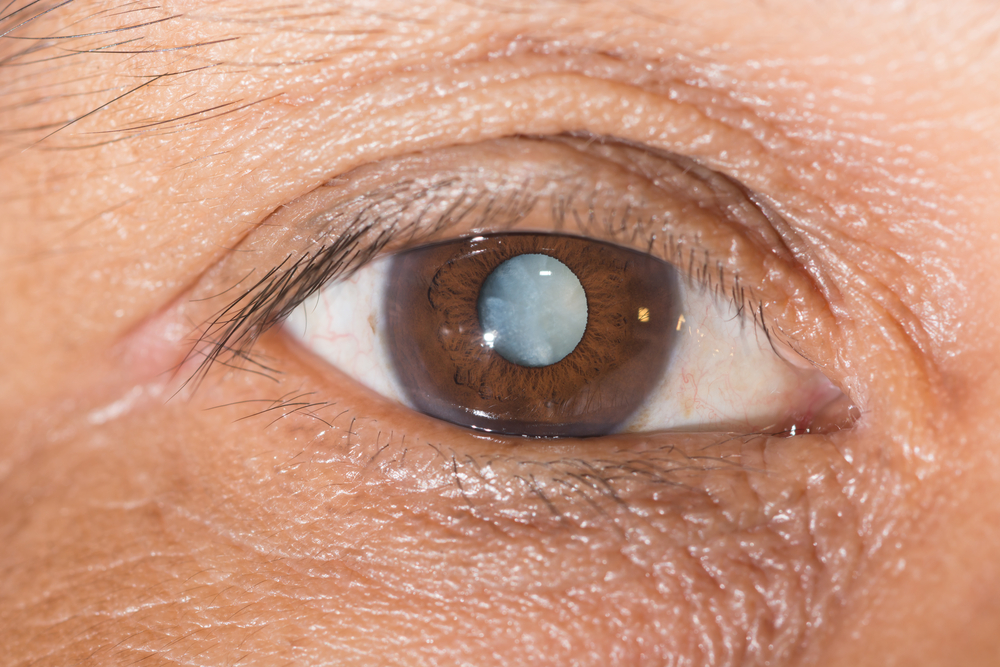Astigmatism is a fairly common condition that affects eyesight due to an irregularity in the shape of the cornea of the eye. To understand what astigmatism is, it’s necessary to have a basic understanding of what the eye does and how it works.

How the Eye Works
Your eyes shape how you see the world; they are a valuable sense organ that reacts to light. Light reflects off objects in your line of sight and enters the eyes through the cornea—the clear, outermost layer of the eye.
From there, the reflected light passes through the iris (the colorful part) and the pupil (the dark circle in the center). The pupils increase and decrease in size to control how much light passes through to the lens, which helps to focus the light on the retina. The retina then converts the light into language your brain can understand and sends it there with optic nerves.
So, as you can see, vision starts with the cornea, which is where the astigmatism irregularity is found when present. You can’t see astigmatism with your naked eye, but you may notice some of its symptoms in the form of blurry vision, nearsightedness, or farsightedness. The condition can only be detected and treated by a doctor of optometry.
Characteristics of Astigmatism
Astigmatism is a refractive error where your cornea is more oval-shaped than circle-shaped. The slightest imperfect bend or curve in the shape of the cornea affects the way the retina receives reflected light. If the cornea is not completely round, the light rays do not reflect evenly and cause distorted vision.
Astigmatism is often paired with nearsightedness (myopia) and farsightedness (hyperopia), resulting in three classifications of the condition: myopic, hyperopic, and mixed (both near- and farsighted, where astigmatism is the primary refractive error).
Astigmatism occurs in varying degrees of severity, sometimes requiring no treatment at all with no noticeable symptoms. Others may need glasses or contacts—or choose a surgical option—to treat the condition. Astigmatism may be present in just one or in both eyes.
How Do Doctors Diagnose Astigmatism?
Checking for astigmatism is a routine part of a comprehensive eye exam, and ophthalmologists use a variety of methods to gain a total picture of your eyes.
Your doctor may use corneal topography to measure the shape and surface of the cornea and provide a detailed map to gauge for astigmatism and any other irregularities. Corneal topography takes measurements to create a computerized, comprehensive topographic map of your cornea.
Visual acuity tests like the Snellen test determine how well you can discern the details of the object you see and can help your doctor diagnose sight problems, including astigmatism. There are no special tools required for this test; you will simply read ever-smaller lines of letters on a chart (usually 20 feet away) until you can’t discern them anymore.

If your doctor detects astigmatism, he or she can assess its severity by measuring the refractive error through the use of retinoscopy. The doctor will shine a beam of light into your eye to see the angle at which it refracts off your retina.
You will also likely need to look through a phoropter, an instrument with a variety of lenses of different strengths. Depending on what looks clear or blurry, the ophthalmologist can determine to what extent the astigmatism affects your vision.
How Common Is Astigmatism?
Astigmatism is a fairly common condition that many are born with. What causes it is unknown; experts suspect it is hereditary. Just because you don’t have astigmatism now doesn’t mean you won’t ever develop it.
Astigmatism can develop after an eye injury or surgery, and its severity can increase and decrease over time. Whether it develops later in life or was with you since birth, astigmatism can be easily treated and should not be extremely worrisome.
Living with Astigmatism
In some cases, astigmatism can cause headaches or eye discomfort. Those with astigmatism may also have trouble seeing at night. In many cases, the most noticeable symptom is blurry, distorted vision at distances both near and far. Your doctor can discuss your options for living with astigmatism based on the degree to which it affects your vision and quality of life.
Glasses can correct astigmatism-affected vision with lenses that incorporate two measurements: cylinder and axis. These indicate the lens power (cylinder) and position of the astigmatism on the cornea (axis). Glasses can typically correct astigmatism to 20/20 vision.
Contact lenses are another option for treating vision affected by astigmatism. They can be soft or rigid, depending on your unique vision correction needs.
You may also elect to correct astigmatism by reshaping the cornea with laser eye surgery (LASIK, or Laser In-Situ Keratomileusis). This outpatient surgery takes less than an hour, but not everyone is a candidate. There are several factors to discuss with your doctor if you are interested in pursuing LASIK corrective surgery, including the stability of your eyesight, age, other health issues and eye conditions, and moisture levels in the eye.
Many times, living with astigmatism is not even noticeable. The error it causes in vision is not enough to call for corrective action as the changes are slight and undetectable. However, when the astigmatism is defined enough to be noticeable, it will cause problems with blurry vision.
Schedule a comprehensive eye exam with your ophthalmologist to check your vision. This is the first step in determining whether you need to take corrective action for your eyesight, whether astigmatism is affecting your sight, and what your options are moving forward to increase your quality of life.
For more information about astigmatism and other eye conditions, visit eyesurgeryclinics.org.






